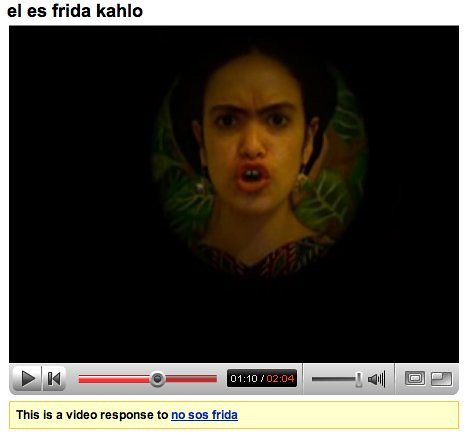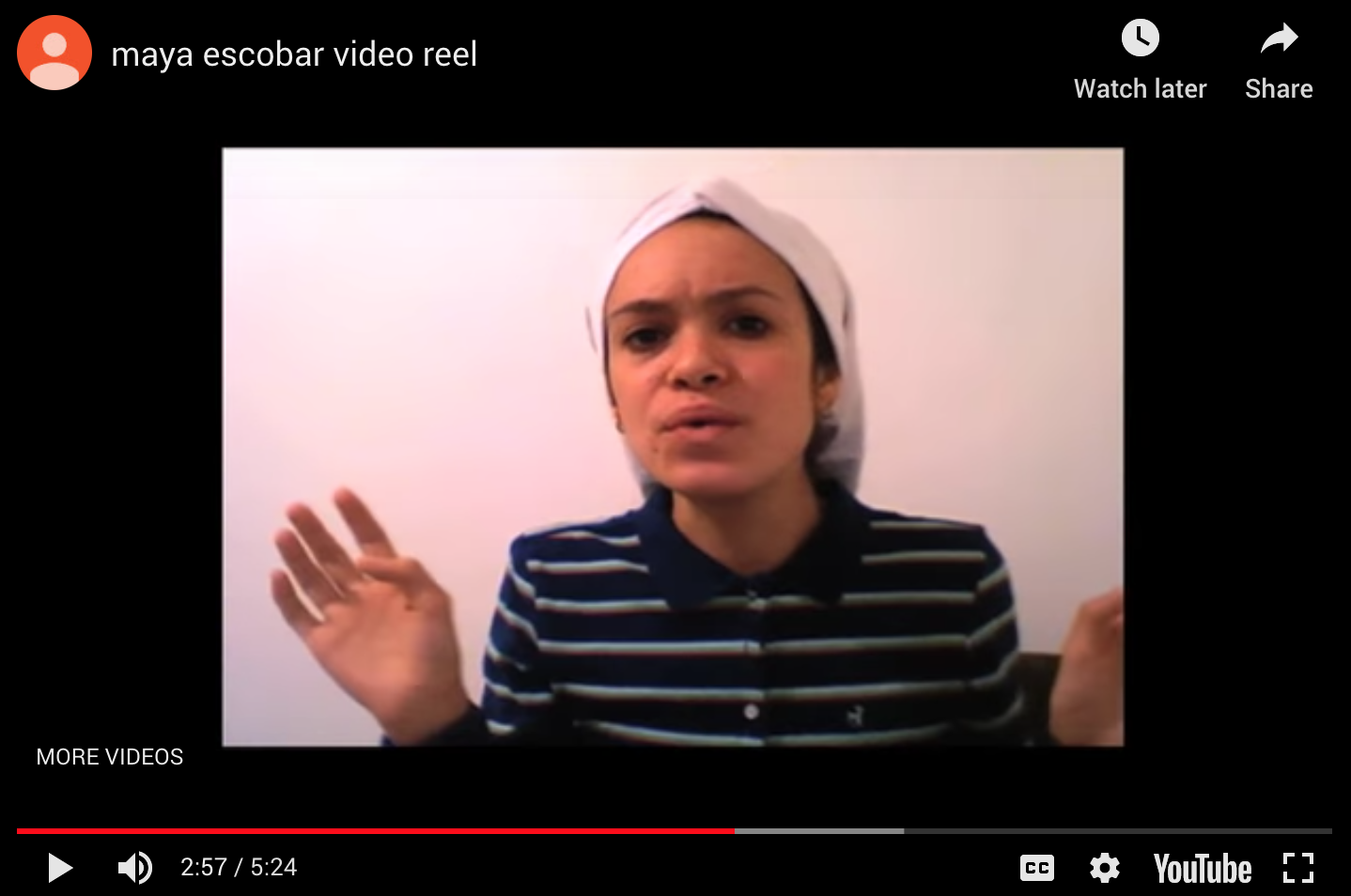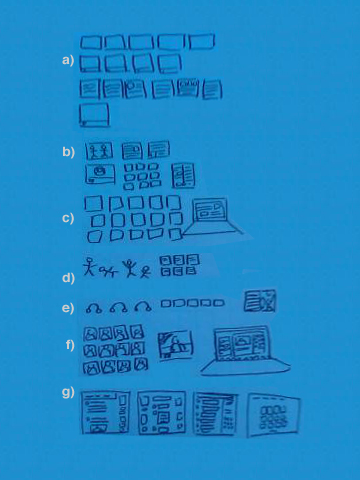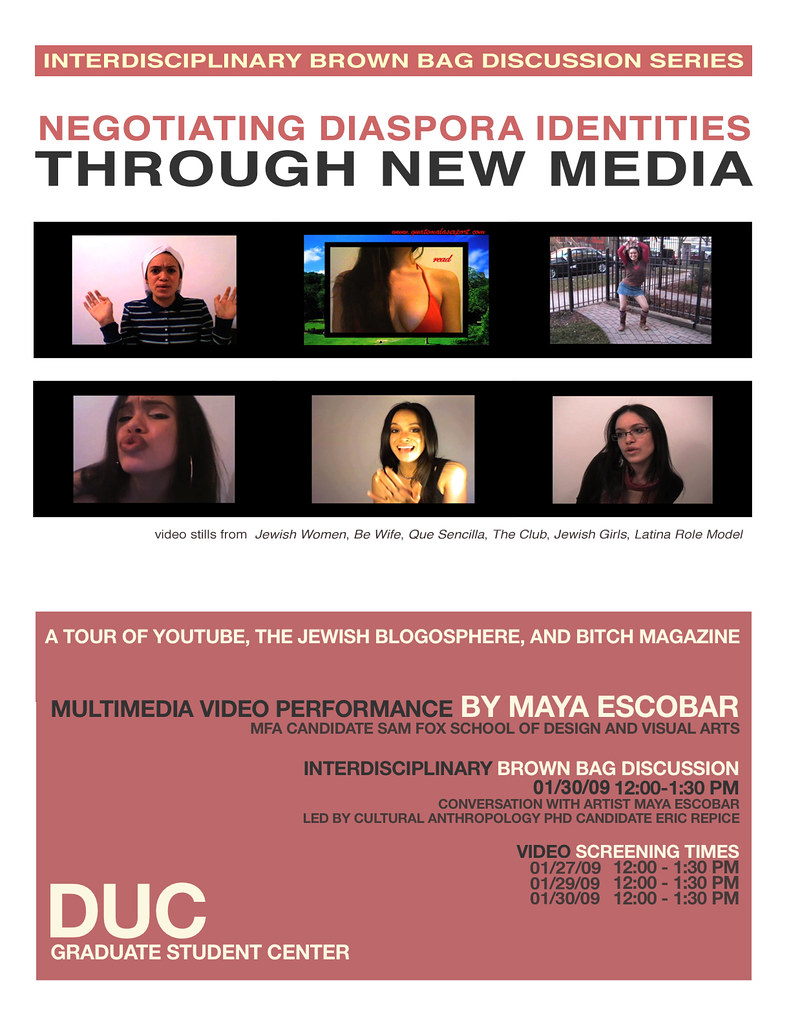Acciones Plásticas プリクラ
Acciones Plásticas プリクラ is a collaboration between artists Maya Escobar and Rio Yañez.
 The Latina Hipstera bad-ass Morrissey-lovin’, tuff-girl sexy chica
The Latina Hipstera bad-ass Morrissey-lovin’, tuff-girl sexy chica The Latina Role Modela diploma totin’ intellectual, sexy, social media goddess
The Latina Role Modela diploma totin’ intellectual, sexy, social media goddess The Homegirla hybridized version of Escobar’s Midwestern Chach and Yañez’s West Coast Chola.In Acciones Plásticas Escobar created a multi-faceted “doll” by assuming the role of designer and distributor, and even posing as the actual doll itself. Each doll was a satirical characterization of some of the many roles that have been projected upon her, and into which she has, at points, inevitably fallen. In conjunction with these images, she developed a short series of low-definition youtube video blogs through which she inhabits the lives of “real women” who have each been visibly defined by societal constructs.Recently, Yañez has been utilizing Japanese photobooths (known as Purikura or “print-club”) as an artist’s tool for creating portraits. These booths are much more common in Japan than their United States counterparts. As a catalyst for creative expression and social interaction they are used primarily by young urban Japanese girls. A standard feature in all Purikura booths allows the user to digitally decorate their portraits after they take them. The options are vast and include wild characters, excessive starbursts of light, pre-made phrases and the option to draw your own text directly on the image. Purikura gives the subjects near-divine powers of self-expression in crafting their own portraits.The two artists who met over the web, decided to bring together Escobar’s highly charged and evocative Acciones Plásticas characters with Yanez’s notorious Chicano graphic-art style and new found obsession with Purikura images, as a way of addressing the construction of Latina identities.Maya posed as The Latina Hipster: a bad-ass Morrissey-lovin’, tuff-girl sexy chica; The Latina Role Model: a diploma totin’ intellectual, sexy, social media goddess; and finally, The Homegirl: a hybridized version of Escobar’s Midwestern Chach (or Chachi Mama) and Yañez’s West Coast Chola. Maya sent digital images to Rio, who in turn drew portraits of her as each of these constructed identities. He approached each portrait with a Purikura sensibility and decorated them each as the characters represented might accessorize themselves. The final series of portraits is the result of negotiating multiple identities and influences. Guatemalan, Jewish, and Chicano sensibilities reflected back through a Japanese Purikura aesthetic. Acciones Plásticas プリクラ challenge and question the thin line between archetype and stereotype. The Purikura elements present the novel signifiers of each social construct represented in the series.This collaboration is the first of many to come as Maya and Rio explore the commonalities and differences of their cultural identities.For more information on Acciones Plásticas プリクラcheck out Rio's blog and stay tuned for guest post by seeNoga aka Carianne Noga on meeting the Chach Homegirl in real life.(video of the Chach featured below)[youtube=http://www.youtube.com/watch?v=Xj3Q42YF40Y]
The Homegirla hybridized version of Escobar’s Midwestern Chach and Yañez’s West Coast Chola.In Acciones Plásticas Escobar created a multi-faceted “doll” by assuming the role of designer and distributor, and even posing as the actual doll itself. Each doll was a satirical characterization of some of the many roles that have been projected upon her, and into which she has, at points, inevitably fallen. In conjunction with these images, she developed a short series of low-definition youtube video blogs through which she inhabits the lives of “real women” who have each been visibly defined by societal constructs.Recently, Yañez has been utilizing Japanese photobooths (known as Purikura or “print-club”) as an artist’s tool for creating portraits. These booths are much more common in Japan than their United States counterparts. As a catalyst for creative expression and social interaction they are used primarily by young urban Japanese girls. A standard feature in all Purikura booths allows the user to digitally decorate their portraits after they take them. The options are vast and include wild characters, excessive starbursts of light, pre-made phrases and the option to draw your own text directly on the image. Purikura gives the subjects near-divine powers of self-expression in crafting their own portraits.The two artists who met over the web, decided to bring together Escobar’s highly charged and evocative Acciones Plásticas characters with Yanez’s notorious Chicano graphic-art style and new found obsession with Purikura images, as a way of addressing the construction of Latina identities.Maya posed as The Latina Hipster: a bad-ass Morrissey-lovin’, tuff-girl sexy chica; The Latina Role Model: a diploma totin’ intellectual, sexy, social media goddess; and finally, The Homegirl: a hybridized version of Escobar’s Midwestern Chach (or Chachi Mama) and Yañez’s West Coast Chola. Maya sent digital images to Rio, who in turn drew portraits of her as each of these constructed identities. He approached each portrait with a Purikura sensibility and decorated them each as the characters represented might accessorize themselves. The final series of portraits is the result of negotiating multiple identities and influences. Guatemalan, Jewish, and Chicano sensibilities reflected back through a Japanese Purikura aesthetic. Acciones Plásticas プリクラ challenge and question the thin line between archetype and stereotype. The Purikura elements present the novel signifiers of each social construct represented in the series.This collaboration is the first of many to come as Maya and Rio explore the commonalities and differences of their cultural identities.For more information on Acciones Plásticas プリクラcheck out Rio's blog and stay tuned for guest post by seeNoga aka Carianne Noga on meeting the Chach Homegirl in real life.(video of the Chach featured below)[youtube=http://www.youtube.com/watch?v=Xj3Q42YF40Y]
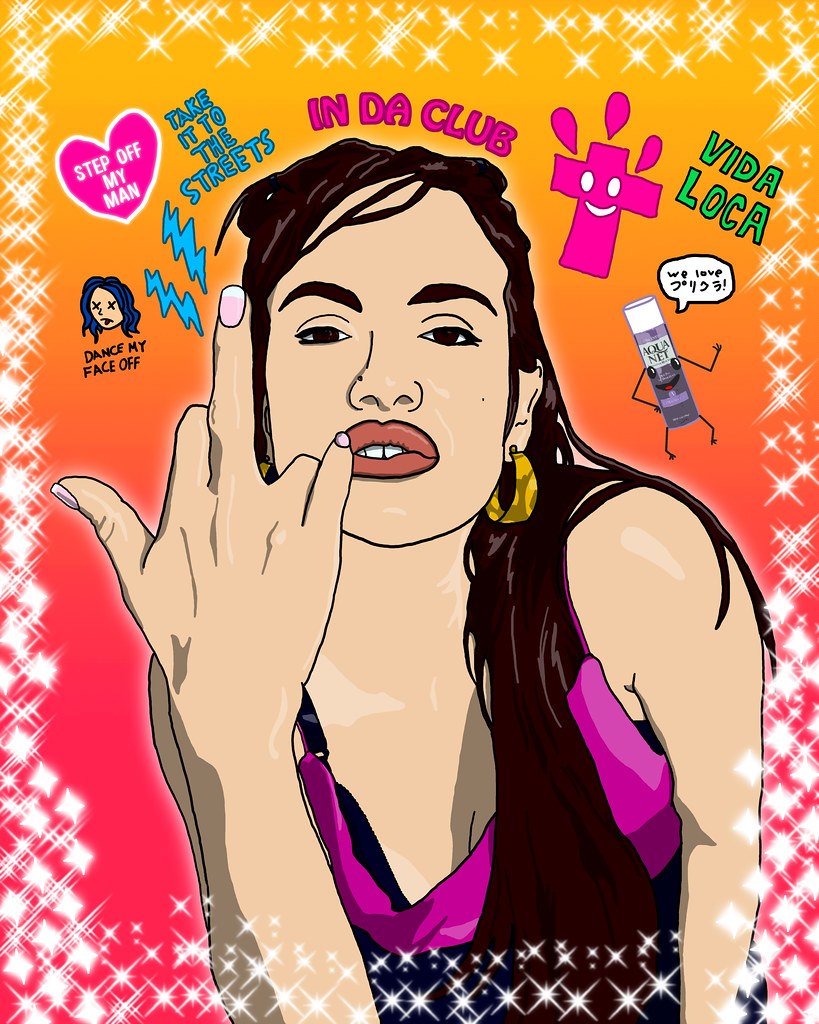






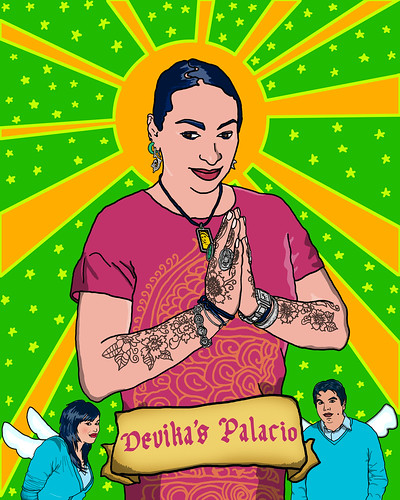
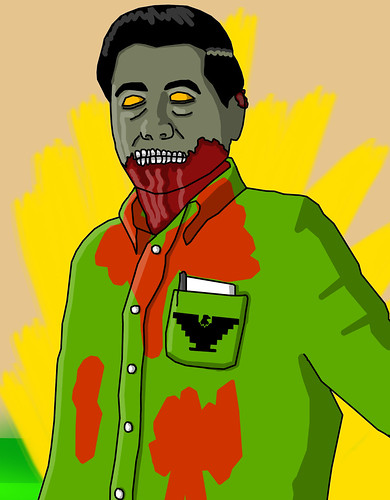

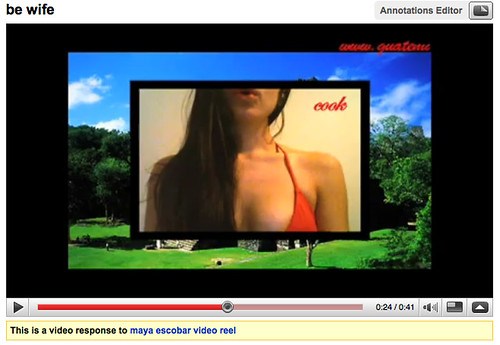
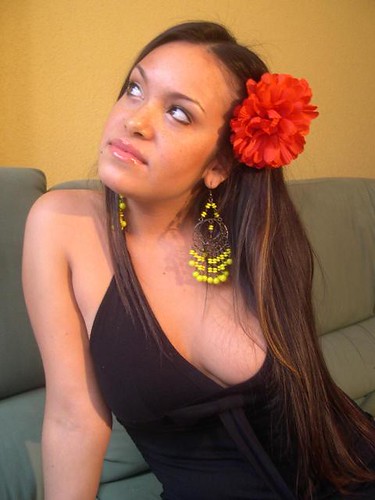 I thought about this phenomenon in relationship to, the images that my friends and I had posted on Myspace throughout that year. I unknowingly went from being slightly annoyed and simultaneously amused by the phrase "take a picture of me for my Myspace", to it becoming completely natural and almost organic to document every moment, every outing, every time my friends and I put on make up, and to take pictures for Myspace. I saw this behavior even further exaggerated in the high school students I was student teaching. Their conversations were dominated with events that had transpired on Myspace, and when they were not talking about Myspace they were taking pictures for Myspace.When we talked about the factors that contributed to the construction of their individual and collective identities, my students were quick to bring up their style of dress, group of friends, the neighborhood they lived in, and the way they spoke. Yet not a single student referenced their online activity, the pictures they posted, the groups they joined, the comments they left on each others pages. I wondered why it was, that they were so aware of and adept at reflecting upon their experiences in the material offline world, but failed to mention the social network that played such a major role in their day-to-day lives.
I thought about this phenomenon in relationship to, the images that my friends and I had posted on Myspace throughout that year. I unknowingly went from being slightly annoyed and simultaneously amused by the phrase "take a picture of me for my Myspace", to it becoming completely natural and almost organic to document every moment, every outing, every time my friends and I put on make up, and to take pictures for Myspace. I saw this behavior even further exaggerated in the high school students I was student teaching. Their conversations were dominated with events that had transpired on Myspace, and when they were not talking about Myspace they were taking pictures for Myspace.When we talked about the factors that contributed to the construction of their individual and collective identities, my students were quick to bring up their style of dress, group of friends, the neighborhood they lived in, and the way they spoke. Yet not a single student referenced their online activity, the pictures they posted, the groups they joined, the comments they left on each others pages. I wondered why it was, that they were so aware of and adept at reflecting upon their experiences in the material offline world, but failed to mention the social network that played such a major role in their day-to-day lives.

